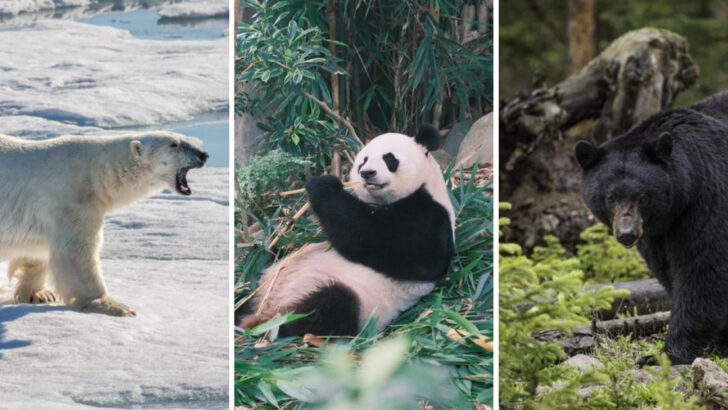Not all bears are created equal—some would rather snack on berries than bother you, while others are best admired from a very, very safe distance. These powerful animals may look cuddly from afar, but their personalities range from shy to downright terrifying.
Knowing which bear you’re dealing with can mean the difference between a peaceful hike and a heart-pounding encounter.
Some bears will run the other way. Others might stand their ground—and then some.
Let’s take a closer look at which species keep to themselves, and which ones top the danger list.
Panda Bear
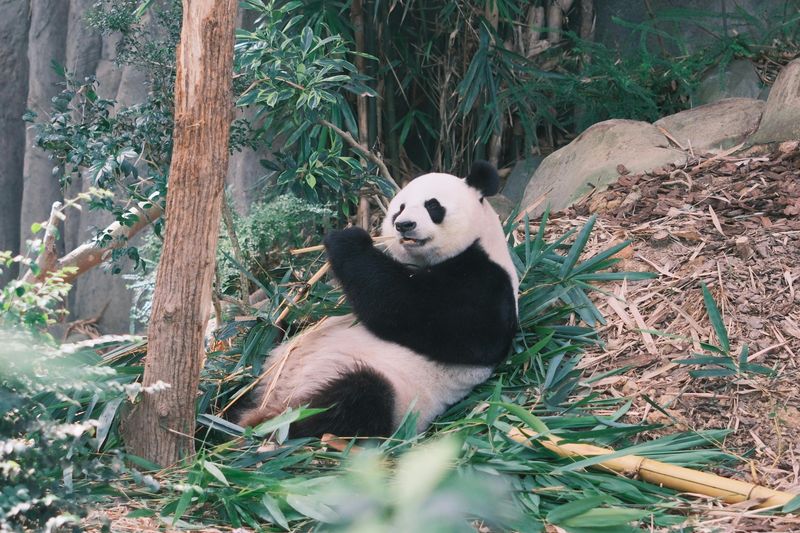
The panda bear, known for its charming black and white coat, is native to China’s misty mountains. Its diet primarily consists of bamboo, and it spends most of its time munching away contentedly. Despite their large size, pandas are generally docile creatures. They rarely show aggression towards humans and are considered one of the least dangerous bears.
Their endearing nature has made them global symbols of conservation efforts. With a cuddly appearance and a diet that keeps them non-threatening, pandas are beloved around the world. Their tranquil existence in lush bamboo forests adds to their gentle reputation.
Spectacled Bear
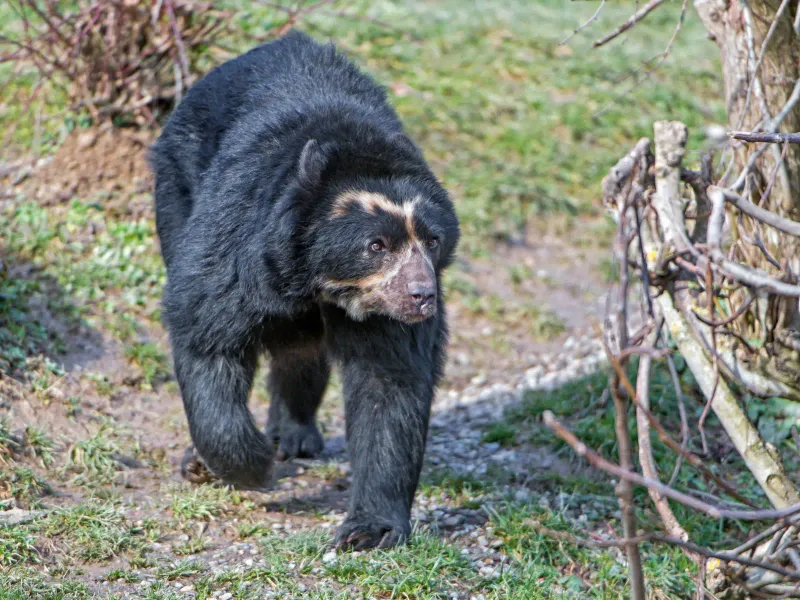
Spectacled bears, also known as Andean bears, are the only bear species native to South America. These bears derive their name from the distinctive white markings around their eyes, resembling spectacles. They are shy and tend to avoid human contact, residing mainly in the dense forests and high-altitude grasslands of the Andes.
Despite their sharp claws and strong build, spectacled bears are primarily herbivorous, feeding on fruit, bromeliads, and even cacti. Their elusive nature and preference for vegetation make them one of the least dangerous to humans. These bears are vital to forest ecosystems, aiding in seed dispersal.
Sun Bear
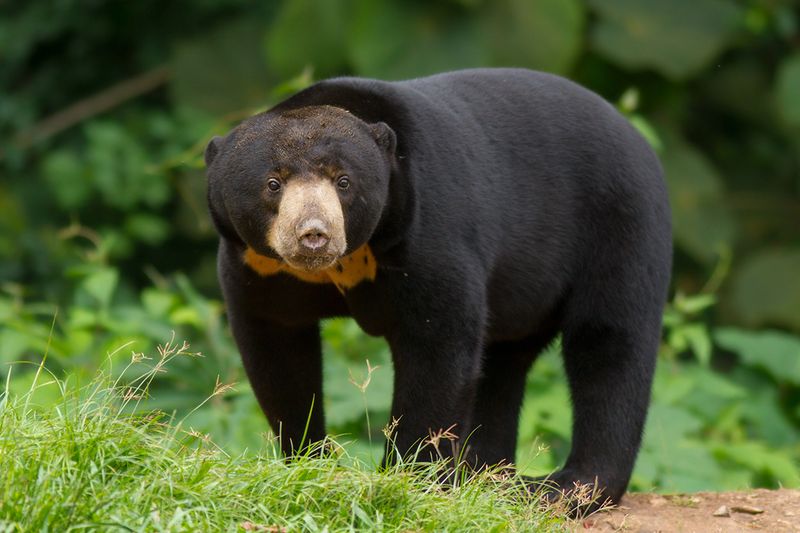
Sun bears, the smallest member of the bear family, inhabit the tropical rainforests of Southeast Asia. Their characteristic feature is a U-shaped, golden or white chest patch that stands out against their dark fur. Although small, sun bears have exceptionally long tongues, perfect for extracting honey from beehives.
These bears are known for their reclusive behavior and generally avoid humans. Sun bears primarily feed on insects and fruits but are sometimes known to scavenge animal carcasses. Their arboreal lifestyle and preference for solitude make them less threatening compared to their larger relatives.
American Black Bear
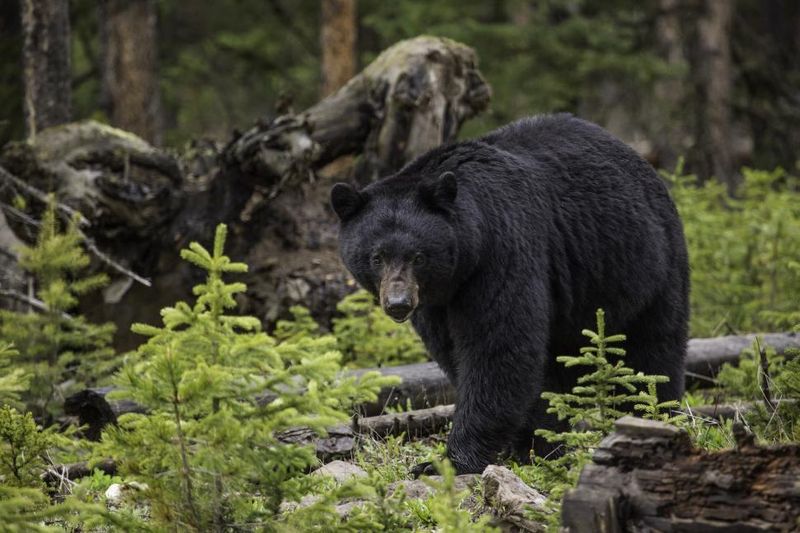
The American black bear is one of the most commonly encountered bears in North America, known for its adaptability to various habitats. These bears can range in color from black to brown, cinnamon, or even blonde. Typically, they prefer forested areas with abundant food sources.
While generally not aggressive, black bears can be unpredictable if they feel threatened or are protecting their cubs. They are omnivorous, feeding on berries, nuts, insects, and occasionally small mammals. Respecting their space is crucial to avoid conflicts. Due to their widespread presence, black bears hold a middle ground in terms of danger.
Sloth Bear
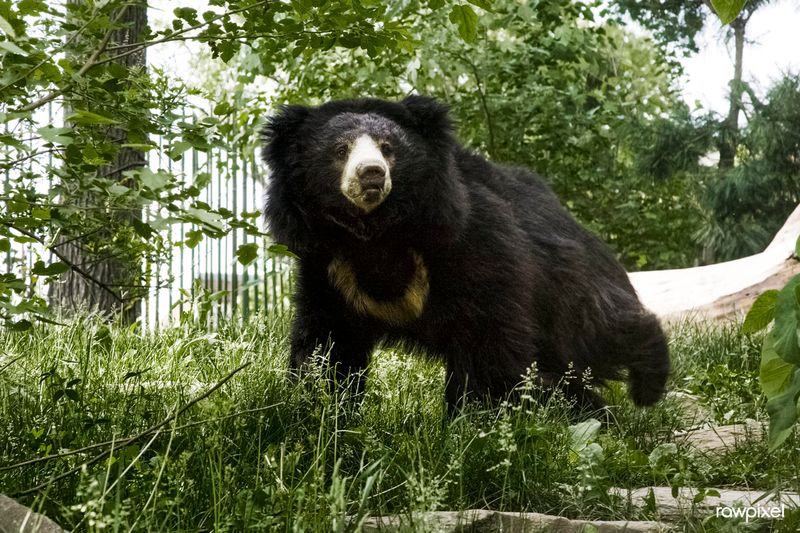
Sloth bears, native to the Indian subcontinent, are distinct with their shaggy fur and long, curved claws. These nocturnal creatures are primarily insectivorous, feeding on termites and ants, which they suck up using their lips.
Though generally harmless, sloth bears can become aggressive if surprised or threatened, especially if they feel cornered. They are known to stand their ground rather than flee. With habitats overlapping with human settlements, encounters can occur, requiring caution. Their unique feeding habits and nocturnal nature make them fascinating yet unpredictable creatures to observe.
Asiatic Black Bear
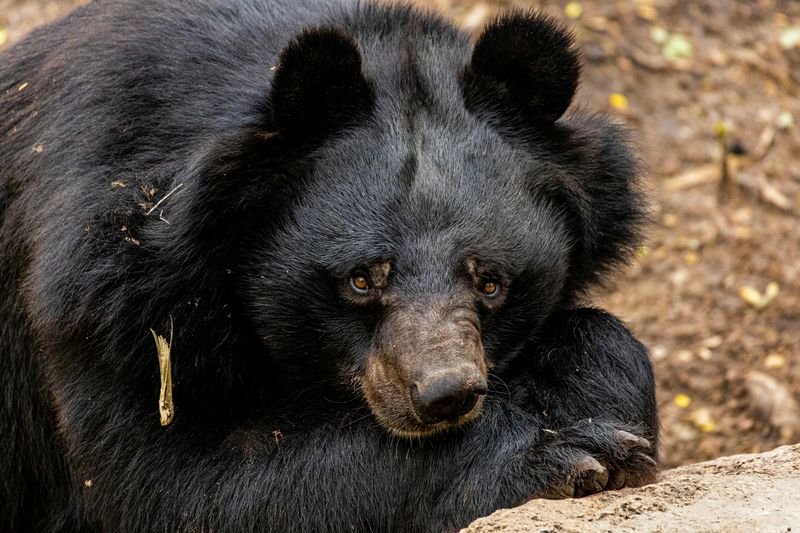
Asiatic black bears, often called “moon bears” due to the white crescent on their chest, inhabit the mountainous forests of Asia. They are agile climbers and often seek refuge in trees. These bears have a varied diet, including fruits, insects, small mammals, and carrion.
Though usually shy, they can become aggressive if threatened or if their young are endangered. Their habitat often overlaps with human settlements, leading to potential conflicts. When encountering these bears, exercise caution. Their distinctive markings and adaptability in diverse environments contribute to their complex interaction with humans.
Brown Bear
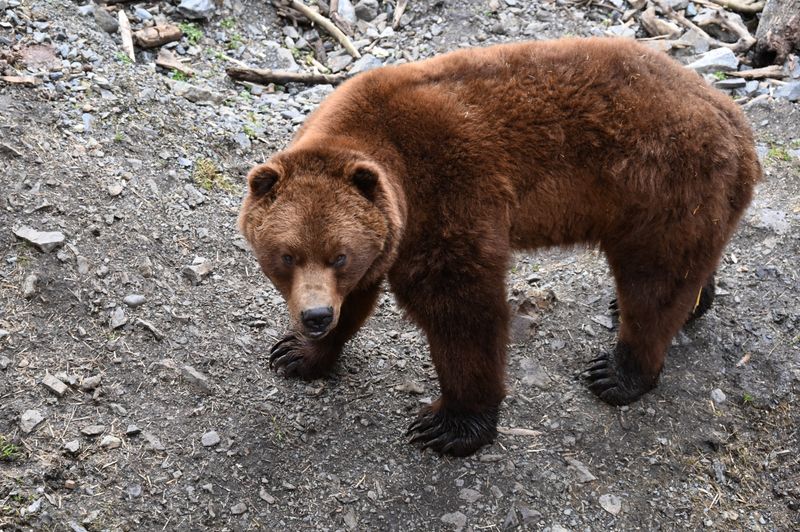
Brown bears, including the famous grizzly, are widely recognized for their formidable size and strength. Found across North America and Eurasia, they thrive in diverse ecosystems, from forests to alpine meadows. These bears are known for their impressive fishing skills, particularly during salmon runs.
Though typically not aggressive, brown bears can be dangerous if surprised or when protecting their cubs. Their opportunistic diet includes berries, roots, and fish, and occasionally larger prey. Awareness of their presence and behavior is key to coexisting safely with these majestic creatures.
Eurasian Brown Bear
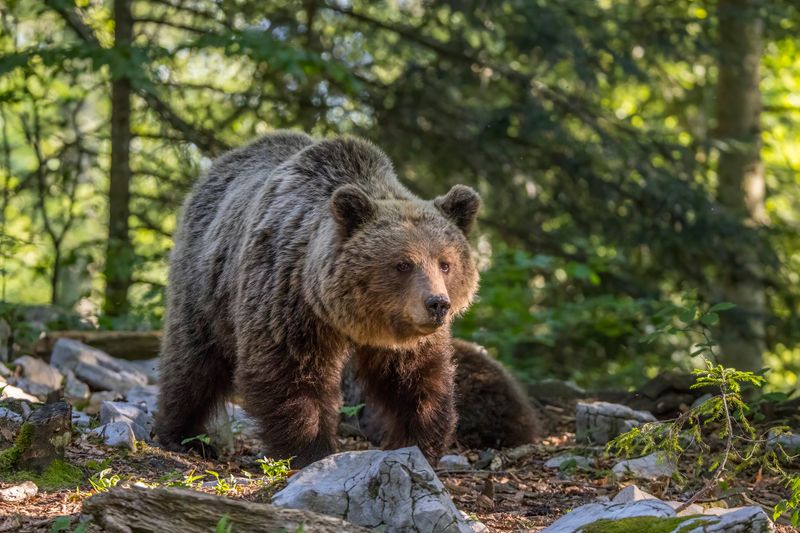
Eurasian brown bears are a subspecies of the brown bear, native to Europe and parts of Asia. These bears vary in size and color and are highly adaptable to different habitats, from dense forests to open mountain ranges.
Despite their size, they are usually shy and avoid humans, but can become bold if accustomed to human food. Their diet is omnivorous, ranging from berries and nuts to small mammals. Management of human-bear interactions is crucial to minimize conflicts. Their presence in folklore and culture highlights their long-standing significance in human history.
Polar Bear
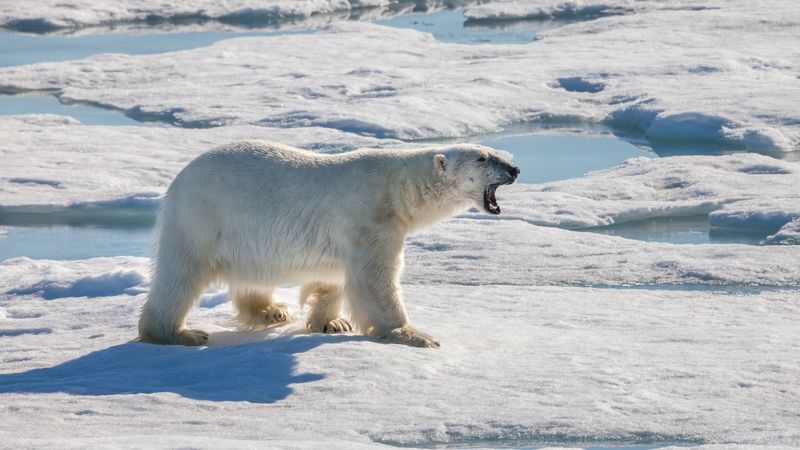
Polar bears are the largest bear species, adapted to the harsh Arctic environment. Their white fur provides camouflage against the ice, and their powerful build makes them excellent swimmers. Polar bears primarily hunt seals, relying on sea ice for access to prey.
While they are not inherently aggressive, food scarcity and habitat loss have led to increased human encounters. Polar bears can pose significant danger, particularly if they associate humans with food. Conservation efforts are essential to protect this iconic species. Their majestic presence on the frozen tundra highlights the fragility of their ecosystem.
Kodiak Bear
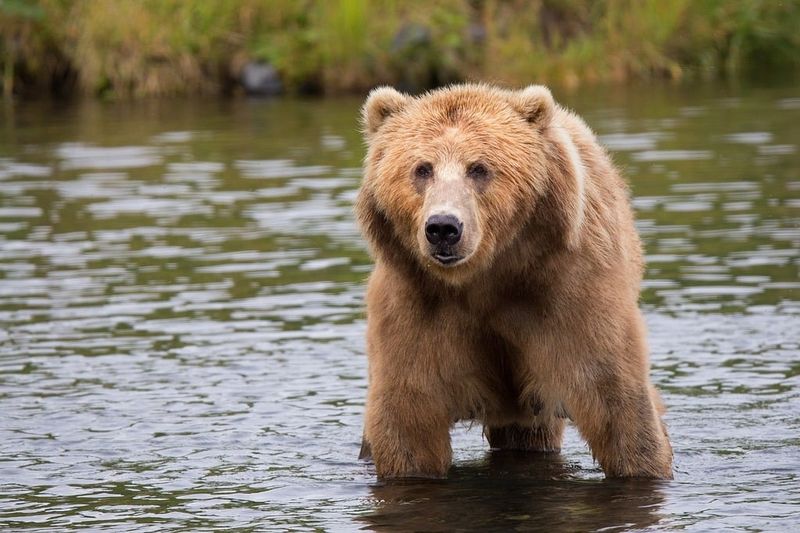
The Kodiak bear, a subspecies of brown bear, is native to the Kodiak Archipelago in Alaska. Known for its incredible size, it rivals the polar bear in terms of weight and strength. These bears have a varied diet of fish, plants, and occasionally large mammals.
Encounters with Kodiak bears are relatively rare due to their remote habitat, but they are potentially dangerous and should be treated with caution. Their impressive stature and isolated existence make them a remarkable symbol of the wild. With a keen sense of smell, they are adept hunters in their lush, rugged environment.

